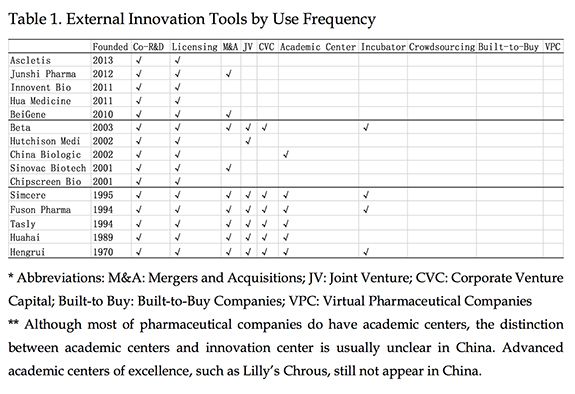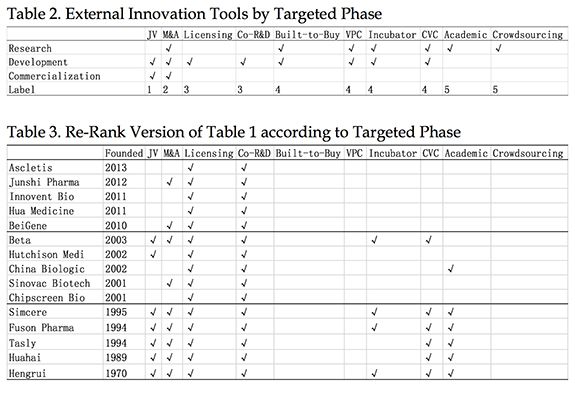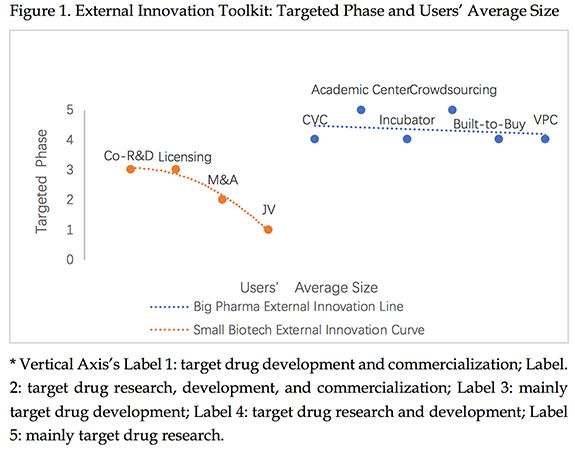- Sustainability
- DE&I
- Pandemic
- Finance
- Legal
- Technology
- Regulatory
- Global
- Pricing
- Strategy
- R&D/Clinical Trials
- Opinion
- Executive Roundtable
- Sales & Marketing
- Executive Profiles
- Leadership
- Market Access
- Patient Engagement
- Supply Chain
- Industry Trends
Use of External Innovation in China
Joanna Huang analyses the use of external innovation tools among small and large pharma in China.
Internal innovation is created to solve a problem, while external innovation is created to solve a problem efficiently. As the cost of R&D grows rapidly, it becomes difficult to increase R&D outcome with limited funds.[1] Hence, open innovation and external science.[2],[3],[4],[5] This research looks at China, where three generations of pharmaceutical companies co-exist.
Typically, Chinese listed pharmaceutical companies can be divided into three generations: (1) big pharmaceutical companies found before 1995; (2) medium-sized biotechnology companies founded between 2001 and 2003; (3) small biotechnology companies founded between 2010 to 2013. The data generated in this study ends extends to December 31, 2018.
The data collection relies on the disclosure of company information; most of our examples are listed companies. Also, it should be noted that pre-revenue biotechnology companies have recently been allowed to go public at the Hong Kong Stock Exchange. Five newly listed companies have benefited from this ruling in 2018, and are used as samples of small biotechnology companies in this study.
Data Analysis

Tools listed on the right side of the Table 1 are more likely to be used by big pharmaceutical companies. Those on the left will be more likely used by small biotechnology companies. Generally, external innovation tools are used for R&D excellence by the bigger companies. Co-R&D and licensing are tools used by all three generations of companies. While it is difficult to identify if frontier tools such as crowdsourcing, built-to-buy, and VPC have been used in China, similar endeavors may include the Simcere X Plan for crowdsourcing promising projects from Ph.Ds or postdoctoral fellows worldwide.
We can also divide external innovation tools by target phase such as research, development, and commercialization. Base on this, we can re-rank Table 1.

According to Table 3, external innovation tools for drug development, such as licensing and co-R&D, are more frequently used than drug research and commercialization. Figure 1 analyzes Table 1 and Table 2 together.

Vertical axis is ranked by targeted phase; if the number is large, the tool will have more focus on early-stage R&D. Lateral axis is ranked by the average size of companies using it; if the number is large, the users of this tool will more likely be big pharma companies.
Big pharma companies mainly use external innovation tools to solve drug research and development problems; and small biotechnology companies mainly use external innovation tools to solve drug development problems. Moreover, as the average size of biotech company increases, new external innovation tools in late-stage development and then commercialization will be gradually employed. However, when the users’ average size reaches an abrupt junction, almost all new external innovation tools used focus on early-stage R&D. The main role of external innovation in companies of different sizes may change along with the growth of companies.
Conclusion
Small biotechnology companies may face urgent problems of fund shortage, so they use external innovation for R&D. For big pharma companies, the problem is more likely the lack of academic breakthrough; they use external innovation more for projects of promise. External innovation, then, is not only a financing tool for small biotechs but also for big pharma companies.
The role of external innovation in companies at different stages of growth is different, and the point of change should be highlighted. Compared with drug development or commercialization, drug research is linked more tightly with external innovation.[6],[7] Based on current conditions, the next stage of external innovation should have more of a focus on improving early-stage research.
This article discusses cases in China only, but may be applicable worldwide. Some M&A and JV cases used for our statistics already include participatants outside Asia, and take into account BeiGene’s acquisition of Celgene’s China business, Beta’s joint venture with Amgen, and Hutchison Medipharma’s joint venture with Nestle Health Science. Interaction on external innovation has become a general global trend.
Jianan Huang, College of Pharmaceutical Sciences, Zhejiang University, China.
References
[1] Scannell, J.W. et al. (2012) Diagnosing the Decline in Pharmaceutical R&D
Efficiency. Nat. Rev. Drug Discov. 11, 191–200.
[2] Workman, P. (2014) Academia and Industry: Successes for UK Cancer Partnership. Nature 510, 218.
[3] Melese, T. et al. (2009) Open Innovation Networks between Academia and Industry: An Imperative for Breakthrough Therapies. Nat. Med. 15, 502–507.
[4] Love, J. H. , Roper, S. , & Vahter, P. (2014). Learning from Openness: The Dynamics of Breadth in External Innovation Linkages. Strateg. Manage. J., 35(11), 1703-1716.
[5] Sheridan, C. (2011) Industry Continues Dabbling with Open Innovation models. Nat. Biotechnol. 29, 1063–1065.
[6] Wang, L. , Plump, A. , & Ringel, M. (2015). Racing to Define Pharmaceutical R&D External Innovation Models. Drug Discov. Today, 20(3), 361-370.
[7] Tufféry, & Pierre. (2015). Accessing External Innovation in Drug Discovery and Development. Expert Opin. Drug Dis., 10(6), 579-589.
IMF Chief Medical Officer Discusses Global Initiatives to Improve Myeloma Treatment
August 20th 2024In an interview with Pharm Exec Associate Editor Don Tracy, Joseph Mikhael, chief medical officer, IMF, offers a glimpse at multiple initiatives that the IMF is working towards to improve myeloma treatment globally.
